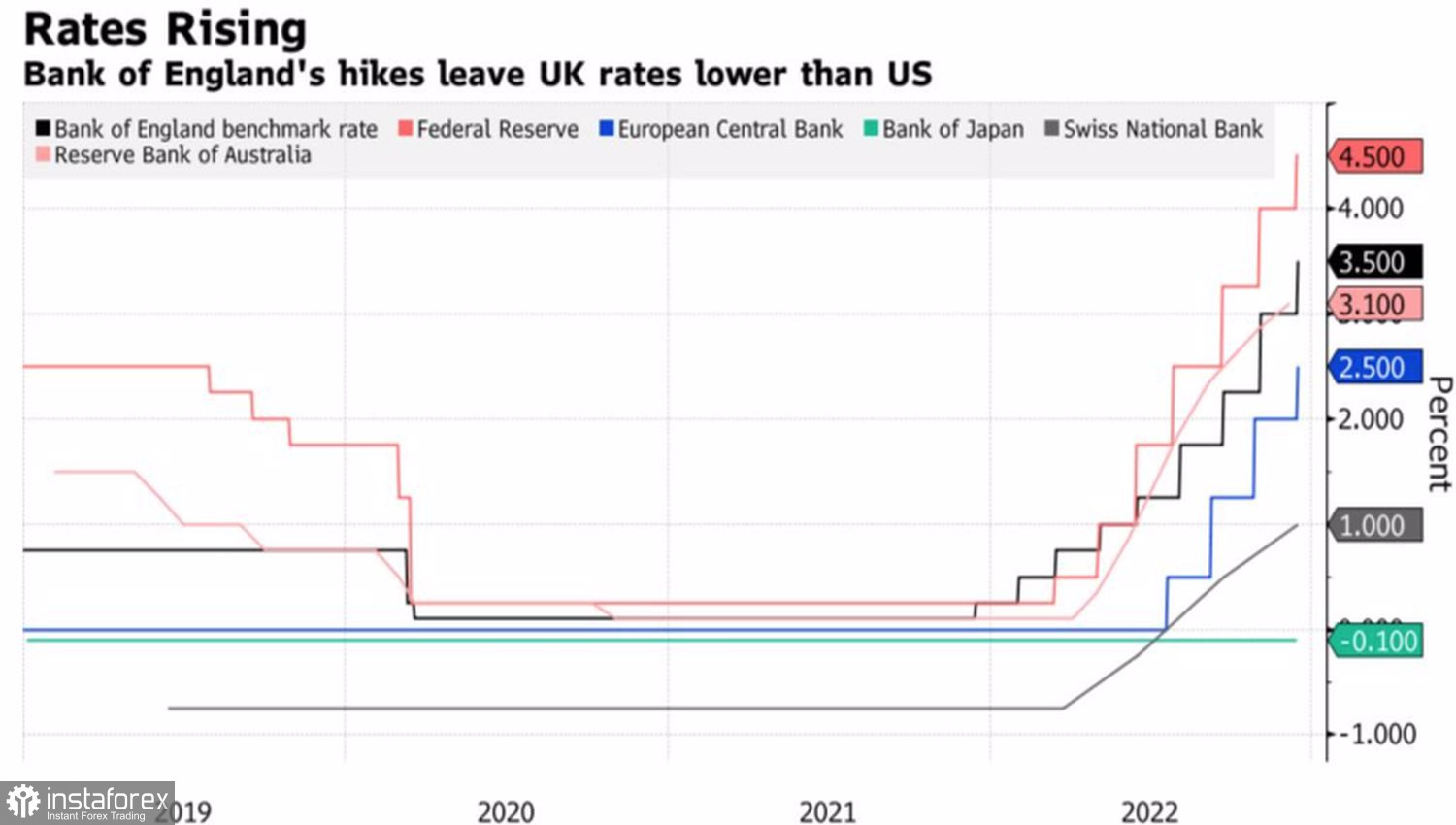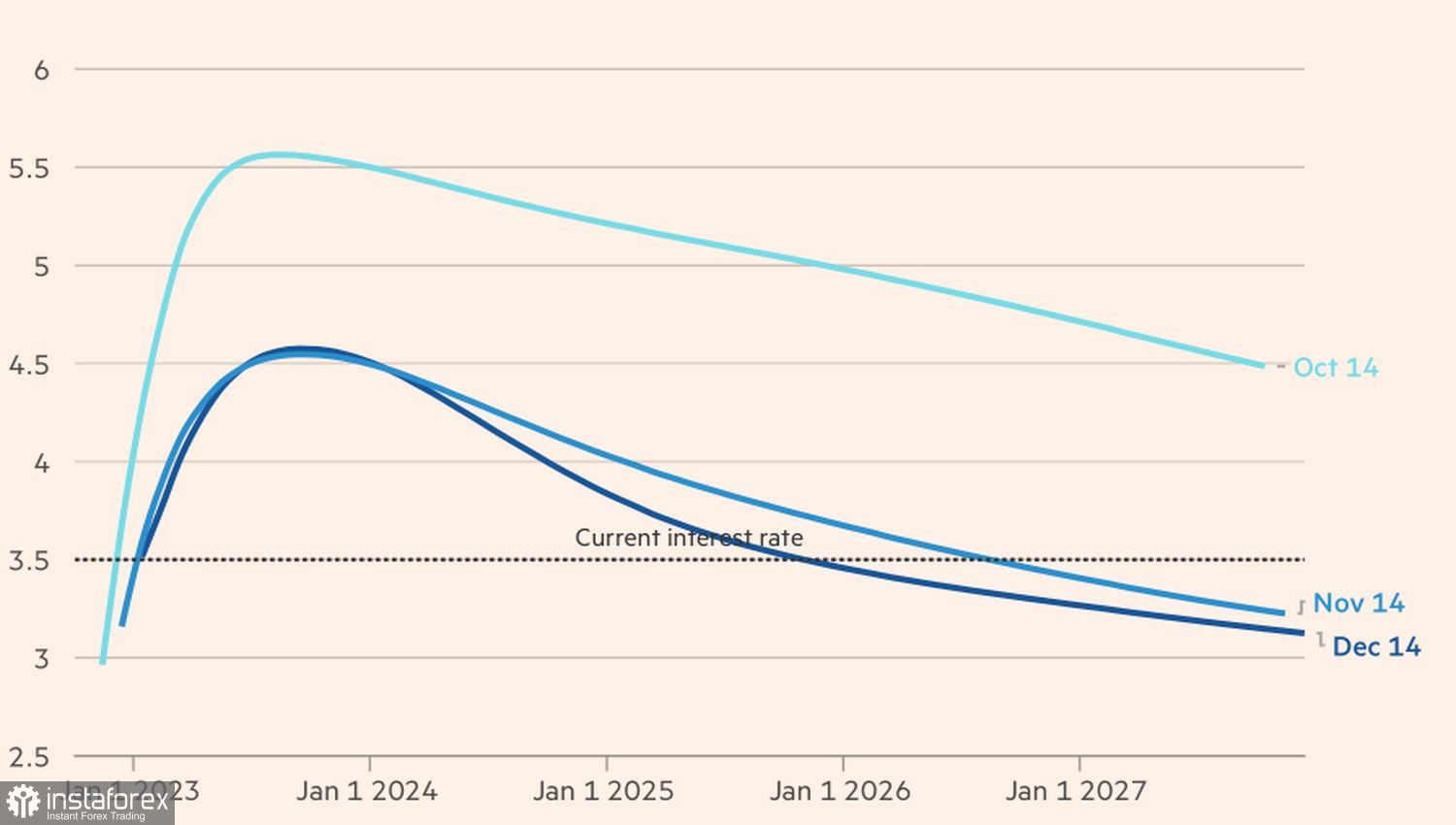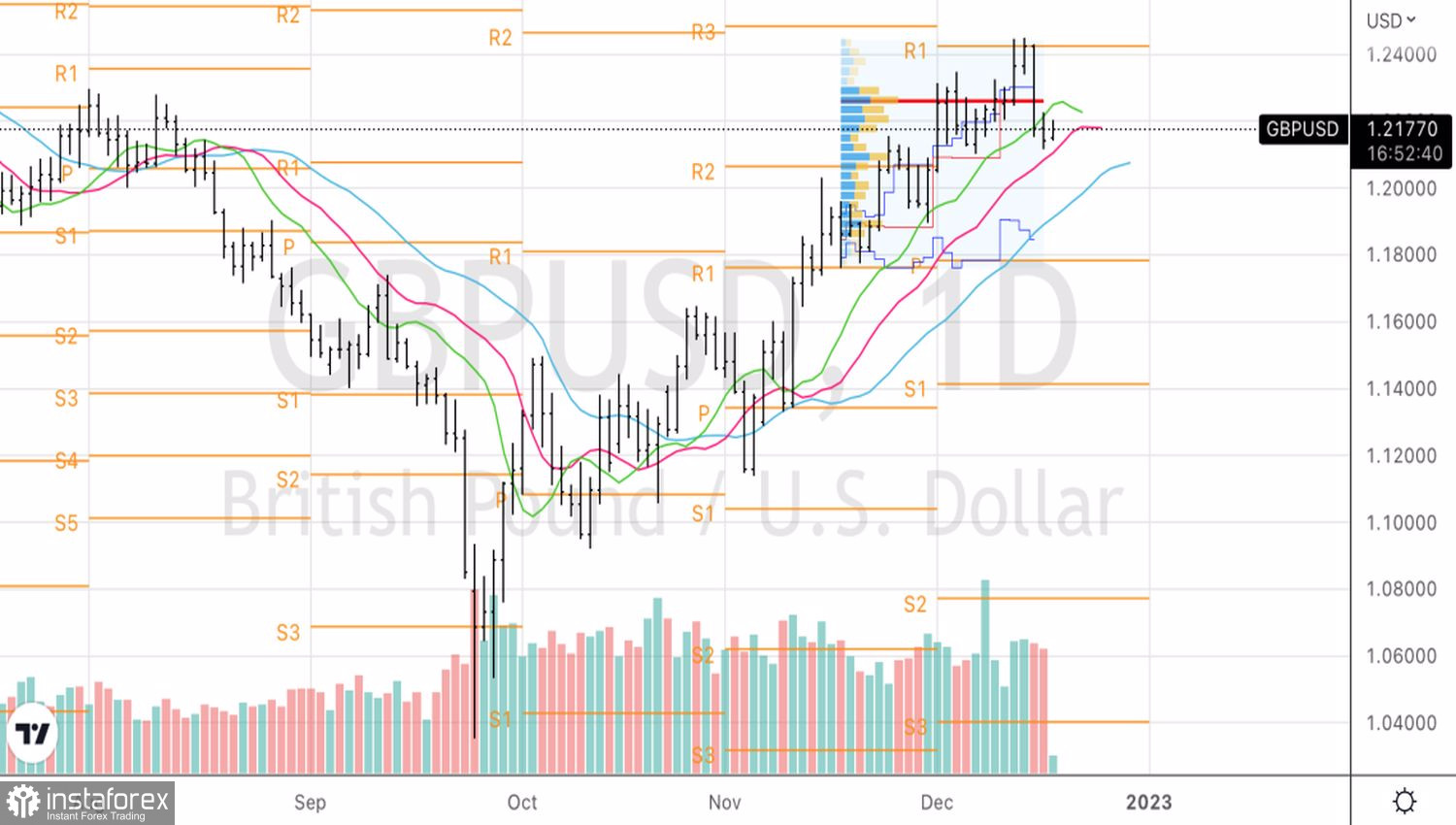Central banks-issuers of G10 currencies seemed to have conspired by raising the main interest rates by 50 bps, but the weakest link was the BoE. Andrew Bailey's statement that inflation in Britain has reached its peak and two MPC members who voted to keep the cost of borrowing at the same level provoked the second best daily EURGBP rally of the year. Sterling weakened against the U.S. dollar by 1.5%, against the Swiss franc by 1%.
Dynamics of Central Bank Rates

Despite the slowdown in consumer prices from 11.1% to 10.7% in November, it was premature to talk about victory over inflation. And although the head of the central bank tried in every possible way to smooth over the phrase about the peak of CPI with statements about the stability of inflationary pressure and about further decisive measures to tighten monetary policy, he failed. Futures market lowered its forecast for the repo rate ceiling to 4.52% by August, British bond yields declined, and GBPUSD quotes collapsed.
While the Fed and the ECB signaled that they were ready to raise rates higher than investors expected, the Bank of England, on the contrary, did not convince that it could reach the peak predicted by the derivatives market. Should we be surprised at the weakening of the pound? GBPUSD could continue its pullback lower as investors adjust their BoE borrowing cost expectations for 2023, Credit Agricole said.
Dynamics of expectations for the repo rate

In comparison, the ECB has made it clear that it is going to add 50 bps to the deposit rate one or more times in the future, causing derivatives to raise their ceiling forecast to 3.7%. The Fed, in its forecasts, openly stated that the cost of borrowing is likely to rise to 5.25%. Different rates of monetary restriction pushed up the EURGBP quotes and dropped the GBPUSD pair. Curiously, the UK and the Eurozone economies are considered weak, but the latest data signal their greater resilience than previously thought. The ECB used this to support the euro, the BoE ignored it, sinking the pound.

An additional driver of the weakening of sterling against the U.S. dollar was a portion of disappointing statistics for the United States, including retail sales, industrial production and business activity. The markets saw the specter of a recession in this, began to sell risky assets and buy safe haven assets, which accelerated the pullback of GBPUSD. As long as global risk appetite continues to fall, and the Bank of England does not begin to repent of its mistake about the peak of inflation, the pair will continue to be under pressure.
Technically, on the daily chart, the GBPUSD has clearly worked out the pair's buying strategy from 1.2325, followed by a reversal and the formation of short positions on the rebound from the pivot point at 1.2425. The inability of the "bears" to overcome the support at 1.2065–1.2075 is a reason for profit taking. On the contrary, its successful assault will allow to increase the shorts in the direction of 1.198 and 1.184.
 English
English 
 Русский
Русский Bahasa Indonesia
Bahasa Indonesia Bahasa Malay
Bahasa Malay ไทย
ไทย Español
Español Deutsch
Deutsch Български
Български Français
Français Tiếng Việt
Tiếng Việt 中文
中文 বাংলা
বাংলা हिन्दी
हिन्दी Čeština
Čeština Українська
Українська Română
Română

